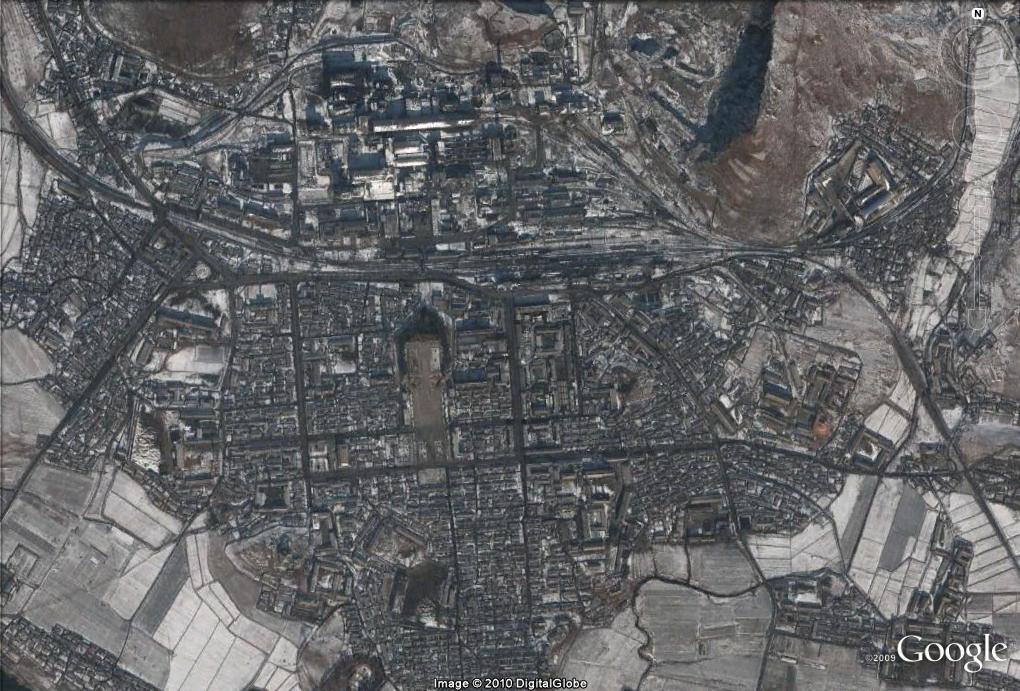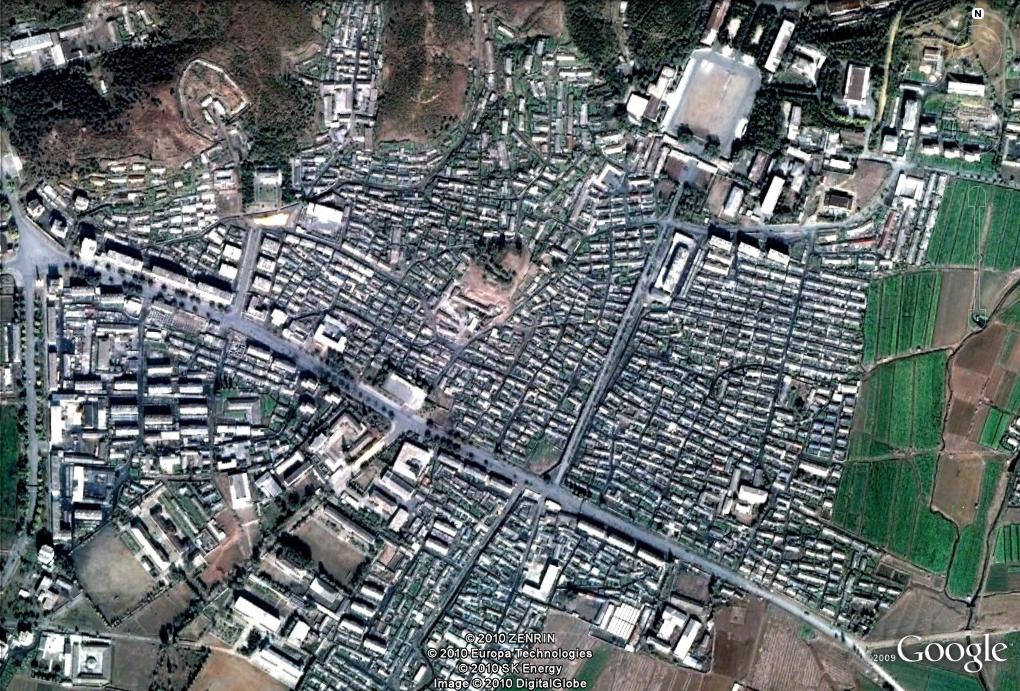Pyongyang Shrunk by 1/3

Overview of Sungho-dong, Sungho District (kuyok), east of Pyongyang. Sungho and three suburban counties were removed from Pyongyang to North Hwanghae Province (GoogleEarth)
Pyongyang is undergoing a procession of depopulation, and its administrative boundaries may have shrunk by 1/3. Three countries (Kangnam, Chunghwa and Sangwon) and one city district (Sungho-kuyok) were identified as being part of North Hwanghae Province. Sungho was carved out of Kangdong County and integrated into Pyongyang in September, 1959. Kangnam, Chunghwa and Sangwon counties were part of South Pyongan Province until May, 1963, when they were also integrated into Pyongyang.
Asahi Shimbun reports:
The long-term effects of continued food shortages have apparently reached the city limits of North Korea’s capital.According to news agency Radiopress, which monitors North Korea, the physical size of Pyongyang’s administrative district has been recently reduced by more than one-third.
It said Radio Pyongyang and other state-run domestic media have recently introduced the counties of Kangnam-gun, Junghwa-gun and Sangwon-gun as well as the Sungho district as being under the jurisdiction of neighboring Hwanghae-bukdo province. The counties and the district previously belonged to Pyongyang.
South Korean human rights groups see this as an attempt to trim the capital’s population to better manage continuous food shortages.
Pyongyang, now believed to have a population of between 2 million and 2.5 million, is used as a showcase for foreign visitors. The capital city is home to a number of high-ranking officials of the Korean Workers’ Party, and gets privileged treatment for food and other necessities compared with other areas.

Chunghwa-up, the seat of Chunghwa County (kun), which is now part of North Hwanghae Province (Google Earth)